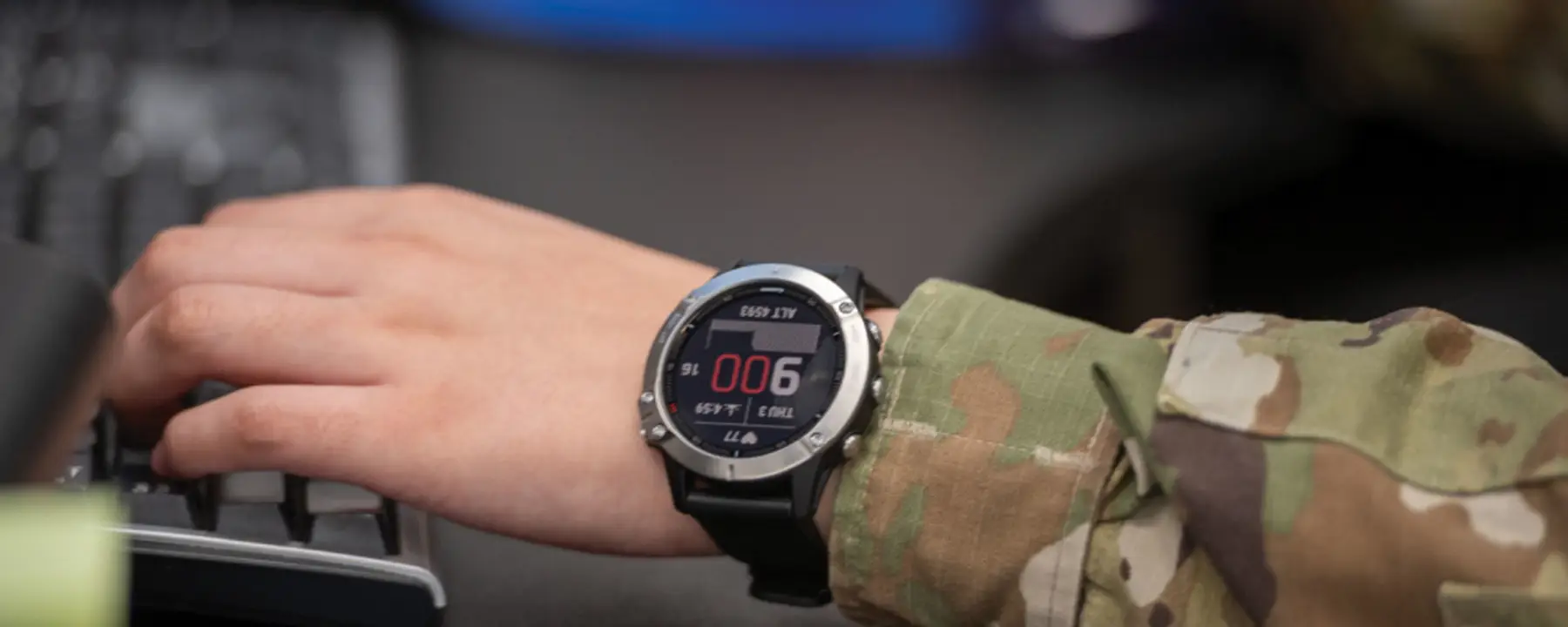The SIGMA+ Health platform is an automated system for collecting, processing, and analyzing physiological metrics from wearable biosensors
Using wearable sensors in the form of smartwatches, bands, or rings as data collection tools coupled with advanced data analytics can provide invaluable insights into the health status of a Service member.
For military operations, wearable sensors can provide information to ensure optimal physical and mental health for operational readiness and decision support. Changes in physiological parameters can indicate signs of physical or mental stress, increase or decrease in body temperature, or fatigue from extreme exertion. Wearables can also evaluate sleep quality as a measure of physical recovery or psychological health. In addition to health tracking, wearable devices can supplement operational needs such as providing navigation or activity tracking.
Wearable Sensors for Optimized Military Performance – the Sigma+ Health Platform
With support from the DoD, RTI has developed the SIGMA+ Health platform, an automated system for collecting, processing, and analyzing physiological metrics from wearable biosensors. We have also developed algorithms that provide pre-symptomatic detection of acute respiratory illness, including COVID-19. These insights help quickly identify symptoms of infection from a biological attack or a pandemic illness.
How Sigma+ Health Works
The SIGMA+ Health platform uses wearable sensors for continuous physiological monitoring to detect various health conditions. Wearable sensors stream data to smart phones through a custom mobile app, and detection algorithms are used to trigger alerts to users and the SIGMA+ network of potential health issues. RTI can work with a range of commercial and/or research grade wearable devices.
The key output of the system is the SIGMA+ Score. This statistically derived risk score is a measure of departure from an individual’s healthy baseline metrics. An alert is triggered when the SIGMA+ Score exceeds a set threshold, which is based on sleep and daytime data—collected from smartwatches or chest straps—corrected for known physical activity.
Instant Access to Wearable Sensor Data via The SIGMA+ Health Mobile App
Using the SIGMA+ Health mobile app, we can download data directly from the wearable device without having to access the device vendor’s mobile app or cloud storage. Data processing, quality control, and metrics extraction are all performed within the SIGMA+ Analytics Node.
In addition, RTI’s SIGMA+ Health mobile app doesn’t rely on proprietary vendor algorithms, so we are device agnostic and unaffected by changes that a vendor might implement. Results reported from vendor-calculated metrics can vary widely from vendor to vendor, whereas RTI’s SIGMA+ Health platform calculates metrics directly from the raw data acquired from the wearable devices. Using this approach, RTI has developed detection algorithms for conditions such as respiratory illness and mild traumatic brain injury (mTBI) with high sensitivity and specificity.
Using Smartwatches for Early Detection of COVID-19 & Other Infections
The COVID-19 pandemic has highlighted the need for early detection of infection in both symptomatic and asymptomatic individuals to allow for timely clinical management and public health interventions. Using wearable sensor technology, RTI tested a data processing and modeling methodology meant to provide pre-symptomatic detection of acute respiratory illness.
In the study published by The Journal of Infectious Diseases, 20 healthy adults received a shot containing the influenza A (H3N2) virus and were prospectively monitored from 7 days before through 10 days after inoculation, using wearable electrocardiogram and physical activity sensors. For each participant, we used a semi-supervised multivariable anomaly detection model on data acquired before inoculation and used it to classify the post-inoculation dataset.
In the end, the algorithm model correctly identified 94% of positive pre-symptomatic and asymptomatic individuals, on average fifty-two hours post inoculation and twenty-nine hours before the symptom onset.
The data processing and modeling methodology shows promise for the early detection of acute respiratory illness. This technique is also believed to be compatible with multiple smartwatches and streaming data, in both local and cloud-connected network configurations.
Learn more about RTI’s Wearables and Sensor Technologies capabilities.
- Department of Defense (DoD)





